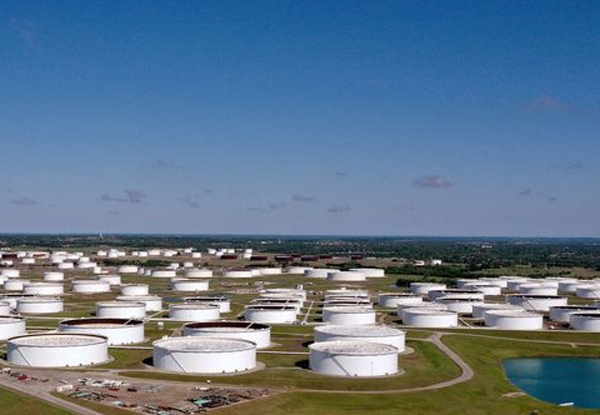EIA reports a 4th straight week rise in U.S. crude supplies

Myra P. Saefong and William Watts, MarketWatch
SAN FRANCISCO/NEW YORK
EnergiesNet.com 01 19 2023
Oil futures finished higher on Thursday, with prices resuming their rally on expectations for higher oil demand from China, as traders look to the upcoming European Union ban on Russia oil products and its potential to tighten U.S. refined product supplies.
Gains for oil oil came despite U.S. government data showing a more than 8 million-barrel weekly rise in U.S. crude inventories, which marked a fourth supply increase in a row.
Price action
- West Texas Intermediate crude for February delivery CL00, 0.73% CL.1, +0.88% CLG23, +0.88% rose 85 cents, or 1.1%, to settle at $80.33 a barrel on the New York Mercantile Exchange. The U.S. benchmark on Wednesday finished lower, snapping an eight-day winning streak.
- March Brent crude BRN00, 0.67% BRNH23, 0.67%, the global benchmark, added $1.18, or 1.4%, at $86.16 a barrel on ICE Futures Europe.
- Back on Nymex, February gasoline RBG23, 0.59% added 2.9% to $2.5968 a gallon.
- February heating oil HOG23, 0.74% rose 3.5% to $3.3759 a gallon.
- February natural gas NGG23, -1.83% fell 1.1% to $3.275 per million British thermal units.
Supply data
The oil inventory numbers were “widely different from the expected numbers,” with a much larger build in crude and gasoline supplies, and at the Nymex delivery hub at Cushing, Okla., Tariq Zahir, managing member at Tyche Capital Advisors, told MarketWatch.
Even so, “we feel the recent strength in crude oil and, so far, a lack of selling in spot markets,” he said. Prices are likely to move higher from here “with the reopening of China, the continued Ukraine situation, and the fact our government must buy crude oil to refill” the Strategic Petroleum Reserve.
The Energy Information Administration on Thursday reported that U.S. crude inventories rose by 8.4 million barrels for the week ended Jan. 13, following three consecutive weeks of gains. On average, analysts forecasted a climb of 900,000 barrels, according to a poll conducted by S&P Global Commodity Insights.
The American Petroleum Institute, an industry trade group, late Wednesday reported a 7.6 million barrel increase in last week’s U.S. crude inventories, according to news reports.
The EIA report, which was released a day later than usual due to Monday’s Martin Luther King, Jr. holiday, also showed a weekly inventory rise of 3.5 million barrels for gasoline, while distillate stockpiles fell by 1.9 million barrels. The analyst survey had called for a supply increase of 1.4 million barrels for gasoline and a decline of 500,000 barrels for distillates.
Crude stocks at the Cushing, Okla., Nymex delivery hub climbed by 3.6 million barrels for the week, the EIA said.
Refining cracks — the price difference between a refined product and crude oil — particularly for gasoline, have been strengthening for weeks in the lead up to the European Union’s ban on Russian refined product imports and the Chinese economy’s reopening, said Troy Vincent, senior market analyst at DTN.
He said worries over East Coast gasoline inventories amid the coming EU embargo, and expectations of a very strong turnaround season for U.S. refiners in the coming weeks are “helping keep crack spreads elevated despite the recently reported inventory builds.”
“However, this bullish risk has to be weighed against continued weakness in U.S. refined product demand amid a slowing U.S. economy, particularly marked weakness in manufacturing and industrial activity,” Vincent said.
Meanwhile, natural-gas futures bucked the upward trend among its energy peers after the EIA separately reported Thursday that domestic natural-gas supplies declined last week, but total stocks stand above their five-year average.
Supplies fell by 82 billion cubic feet for the week ended Jan. 13, according to the EIA. That compared with expectations for a decline of 72 billion cubic feet, according to the average forecast of analysts, brokers and traders surveyed by The Wall Street Journal.
Total working gas stocks in storage stand at 2.820 trillion cubic feet. That’s 34 billion cubic feet above the five-year average, EIA data showed.
Other market drivers
Oil futures stumbled to begin 2023 but had found their footing on optimism over China’s reopening, which is expected to drive a pickup in global crude demand.
“While China’s mobility data are inflecting positively, there is still possibly too much optimism over China’s demand profile built up in short-term analysts’ expectations,” said Stephen Innes, managing partner at SPI Asset Management, in a market update.
The first quarter of this year will be a “fragile period for commodities, with recession angst filling the airwave,” he said.
Investors have been contending with growing fears of a global economic downturn or recession as a result of aggressive monetary policy tightening by the U.S. Federal Reserve and other major central banks.
“The level of demand matters for oil prices, so if consumers have convinced themselves of recession imminent well, that spring break drive to Florida, or Hawaiian vacation will be shelved, hurting the planes, trains and automobile view for oil markets,” said Innes.
Nevertheless, the “observed sharp increase in crude imports to China and the significant decrease in product exports implies [that mainland China] is preparing for a substantial surge in demand, meaning a massive impact on global oil prices could happen in Q1,” Innes said.
marketwatch.com 19 01 2023












